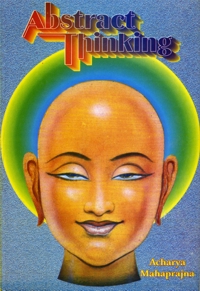
How to perceive, how to look at things, is a very significant question. Seeing is important, but what is far more important is how we see a thing, how we approach it. The simple answer is that we see with our eyes. It is quite all right. Of course, we see with our eyes, but a merely visual perception will not suffice. Before that, we must come to understand thoroughly the essential conditions of such a perception. The first condition is that we must view a thing in a detached manner, without any bias, free from attachment and aversion. If there is any attachment or infatuation, we shall not be able to view it rightly. The eye would see, but not what is factual or real - it would see something quite different.
As amorist saw the round face of a woman; it appeared to him to be like the moon. A hungry man saw it, and the face seemed to him like a round chapati. The first man's perception is conditioned by the passion of love: the second man's by materiality. How can a woman's face be the moon or a chapati?
We see with our eyes, but we do not see what is really there - the factual. What we see is a conditioned view. Our infatuation or attachment determines what we see. Where there is attachment, even an ugly person looks beautiful. Likewise, where there is aversion or contempt, even a beautiful person looks ugly. What is factual or real, the poor eyes cannot perceive. The eyes perceive through a screen of attachment or aversion, of like or dislike. Until this covering is removed, until all infatuation dissolves, and there is total freedom from attachment or aversion, from like or dislike, the eyes cannot see the real: they are incapable of seeing things as they are. A man may be good, but he appears to us to be wicked. We come to view him as a wicked person. In our viewing of good and bad, an altogether different mentality is at work. It is therefore, essential for us to look with detachment, without any bias, so that we see what is actually there, the factual. Let us view only what is really happening: let not our perception be coloured by thought, sentiment or sensation. To see objectively, with a consciousness freed from attachment and aversion, with detachment, to see a thing as it is, -that should be our approach.
The exercise of non-attachment is truly great. The yoga of non-attachment is the quintessence of Gita. Does one who studies or expounds the doctrine of non-attachment, become truly detached in the field of action? Not necessarily, because even among daily reciters of this doctrine, the spirit of non-attachment is conspicuous by its absence. The chief reason for it is the lack of practice.
The great Yogi, Krishna says - “I sit indifferent, and am detached in action Therefore, I am free from the bondage of karman."
Without practice, no man can be truly detached. Commonly, each man lives in the midst of pleasant and unpleasant sensations. Without sadhana, without regular practice, it is not possible to transcend like and dislike. The word 'detached' in Gita means self-realized. Only a self-realized person can be truly non-attached. He alone is free from the bondage of karman.
The way to self-realization lies in the neutralization of unnatural distortions in everyday action. To see, to hear, to touch, to smell, to breathe - all these comprise the activity of the senses. The sense organs are engaged with their own particular objects. But sensation is not man's essential trait. He, who experiences his true nature as the knower and the seer, becomes self-realized. All this depends on practice.
 Acharya Mahaprajna
Acharya Mahaprajna

